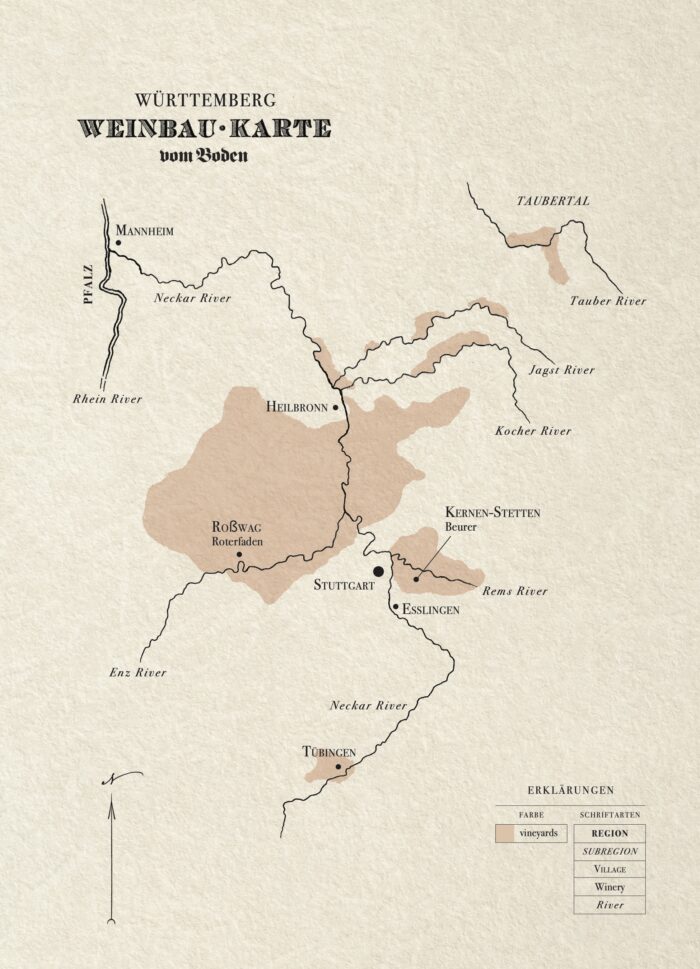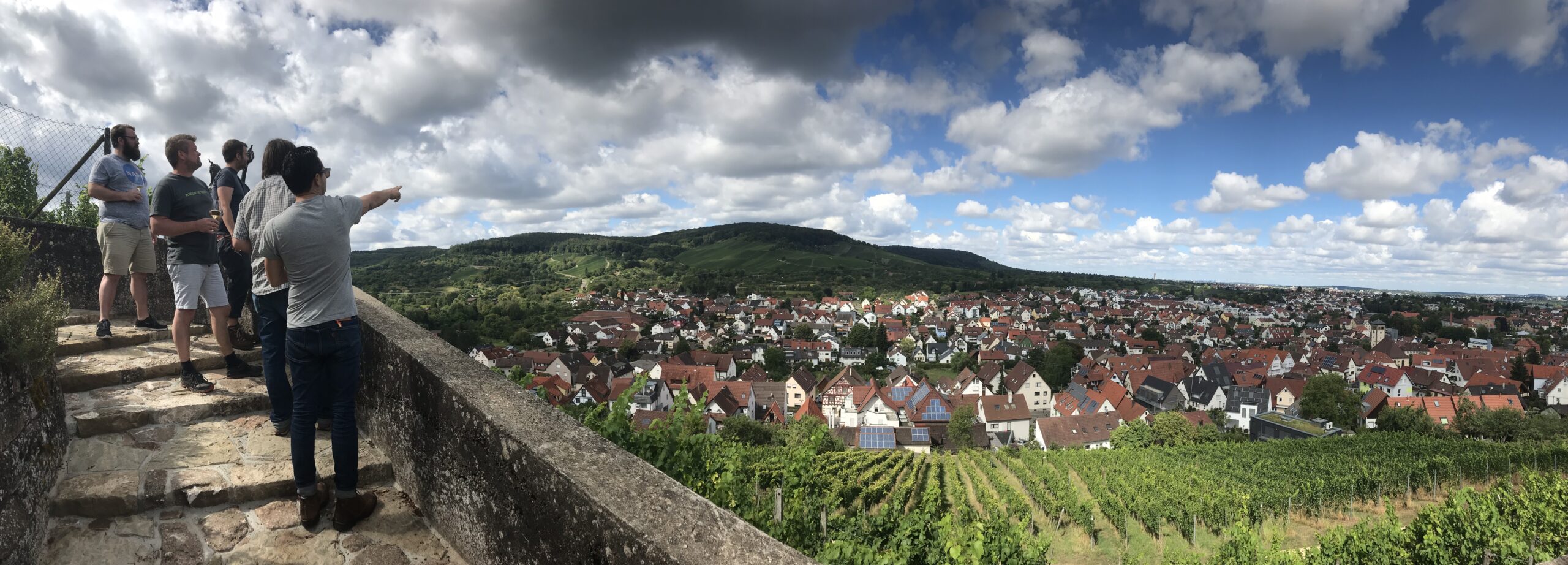
So much of the wine culture here pushes the expectations of what German wine is, or can be. I love this place.
Here is another yet-unknown tapestry of vineyards with one of Germany’s most diverse cultures of winemaking. German Blaufränkisch? German Schiava? Hell yes. Grapes don’t recognize our silly political borders; if the vine is healthy, then the vine is at home.
At just a touch over 11,000 hectares, this is not a small wine region. It expands from Heilbronn down to Stuttgart and Esslingen, with small islands of vines quite far north (the Taubertal) and further south near Tübingen. While the Neckar River provides the main axis, zigzagging in a northerly direction until it empties itself into the Rhine at Mannheim, there are a number of important tributaries of the Neckar, including the Rems to the east of Stuttgart and the Enz to the north.

Alas, as with Franken, for most Americans these landmarks might not help a whole lot.
The most important fact to understand is that this is a red wine region.
Stuart Pigott’s 1995 book The Wine Atlas of Germany states: “Only Württemberg has a tradition, unbroken since at least the 17th century, of making good red wine.” Baden would be the only other possible candidate for such a red wine history, though I guess Pigott’s line implies that Baden for a time didn’t make red wine, or made largely bad red wine? So it goes.
The cast of red wine characters here is unique, and uniquely deep. Lemberger (Blaufränkisch in Austria) sees its apogee here. Wine lovers — god bless us — are a myopic bunch. While the world chases the 263 bottles that Cornas produces each year, we have in certain parts of Württemberg sinewy, nervy reds perfumed of game and flower. The best are clear, beautiful, and primal, sometimes a touch brutal in structure, yet also elegant in mineral honesty and clarity. Oh, and this Swabian Cornas trades at 10 percent the tariff of Cornas-Cornas. No one seems to care, not yet at least. Compared to the northern outpost of Württemberg, Austria’s Blaufränkisch feel unapologetically fruity, lavish, expansive and heady.
In the Teutonic analogy I’m weaving here, Württemberg is something like the Northern Rhône and Austria is the Southern Rhône. Sure, this analogy is a bit nuts, but it’s also a bit true.
Trollinger, known as Schiava in Italy, is also a part of the cultural foundation of Württemberg viticulture. I am a firm believer in Trollinger, at least when it is treated with the appropriate respect. The wines it creates in this place are clear and bright, berry-fruited, tart, aromatic and herbal. Here we have the perfect chillable red. They are energetic and refreshing; they taste alpine in a way.
If these two grapes are the stars, there is still more fun to be had. There is Portugieser, one of my favorites, which when done well reminds me of a gentle Nebbiolo. Dornfelder, one of Germany’s most maligned grapes, can be interesting in the right hands. Schwarzriesling (Pinot Meunier), Pinot Noir, Frühburgunder, and of course the international varieties, including Cabernet and Merlot, are also abundant here.
Yet, for all this red-wine talk, Würrtemberg also has Riesling.
Trollinger is the most-planted grape, yet Riesling is a close second. While there is a lot of warm and round Riesling, this being the south and all, the devil is in the details. The cooler sites can be higher up on the slopes. Some have told me the highest-altitude vineyards in Germany are here, up to and past 500 meters. That’s not crazy high, but it’s something. There are also more creative exposures, with cooler parcels facing more east, or more north, etc. In other words, you can find some white wines with serious zing here, Jochen Beurer being one of the greats of this style.
The biggest issue for the international reputation of Württemberg might be Württemberg itself. Stuttgart, the wealthiest city in Germany (with Porsche, Daimler, and Bosch all headquartered there), has a long tradition of drinking most of the wine the region produces. So first we have to learn more about this place; then we have to try and get the damn bottles from these thirsty residents. 